The Extraction, Identification, Purification and Quantitation of Cyanidin-3-Glucoside in Black Rice
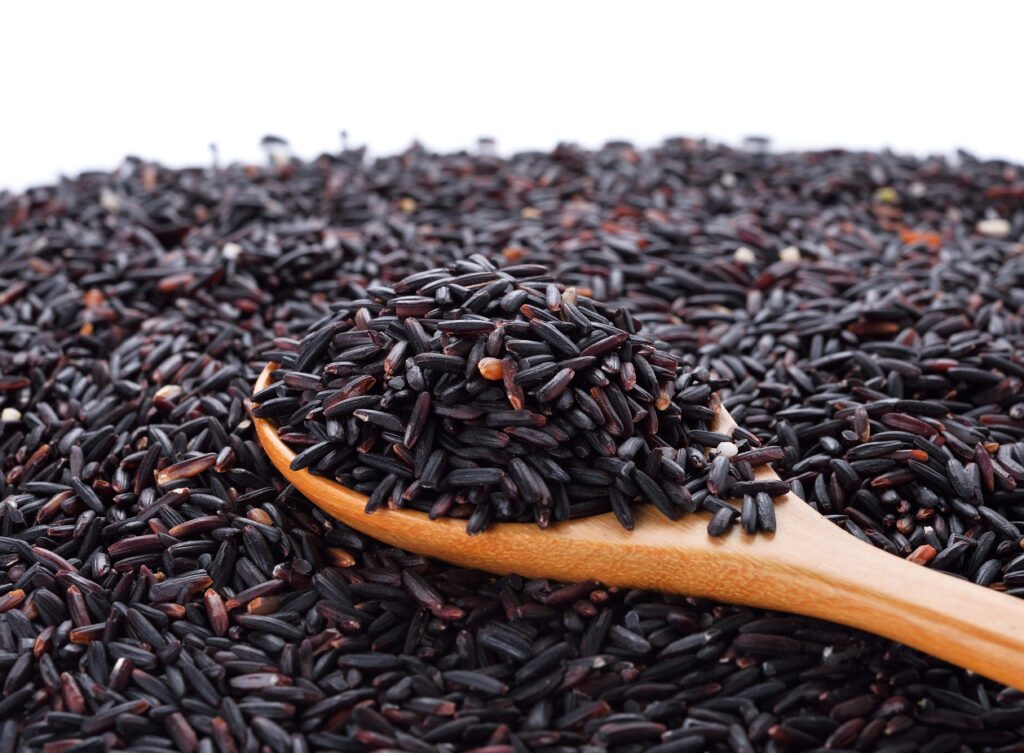
Instrumentation
Flash: puriFlash® 5.250, XS-Vap®
Mass Spec: expression® Compact Mass Spectrometer (CMS)
HPLC: AVANT™
Introduction
Rice is one of the more essential foods in the world, especially in Asian countries. Amongst the pigmented rice varieties, black rice has received increasing attention because of its high nutritive value and beneficial health properties. Black rice is an anthocyanin enriched pigmented rice that contains Cyanidin-3-glucoside (Cyn-3-Glu), Cyanidin-3-rutinoside (Cyn-3-Rut), Peonidin-3-glucoside (Pn-3-Glu) and other anthocyanins. Cyanidin-3-glucoside is the dominant anthocyanin in black rice.
This application note shows how Cyanidin-3-glucoside is extracted from black rice and purified with a prepLC/Flash system. The amount and purity of Cyn-3-Glu is measured utilizing a certified reference standard.
Method
Cyanidin-3-glucoside Extraction
Black rice was purchased from a local grocery store, ground into fine powder with a spice grinder, and extracted with the following method:
1. 30 grams of the ground black rice was mixed with 200 mL of methanol acidified with 1.0 N HCl (85:15, v/v) and sonicated for 15 min.
2. The mixture was centrifuged at 7500 rpm at 4°C for 5 min. The supernatant was decanted into a clean flask. The pellet was extracted again with 200 ml of methanol acidified with 1.0 N HCl (85:15, v/v), and sonicated for 15 min.
3. Supernatant from the two extractions was combined and reduced to 25 ml using a rotatory evaporator.
4. A small part of the concentrated extract was diluted 10x with water for HPLC/UV/MS analysis, the rest was loaded directly on a PrepLC/Flash system for purification.
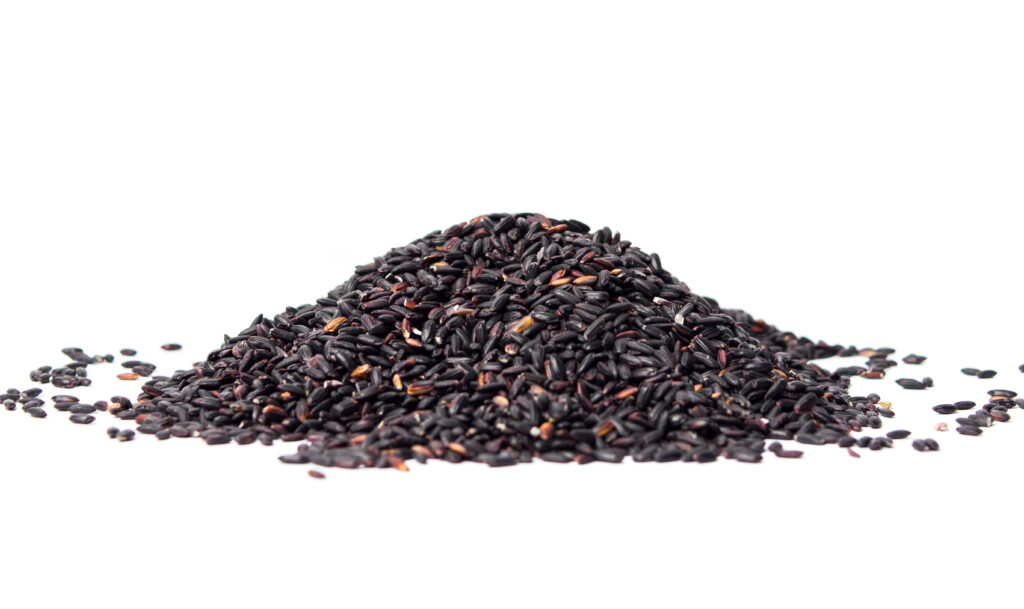
Analytical HPLC/UV/MS Setup
Table 1: Analytical HPLC/UV/MS method for the black rice extract.
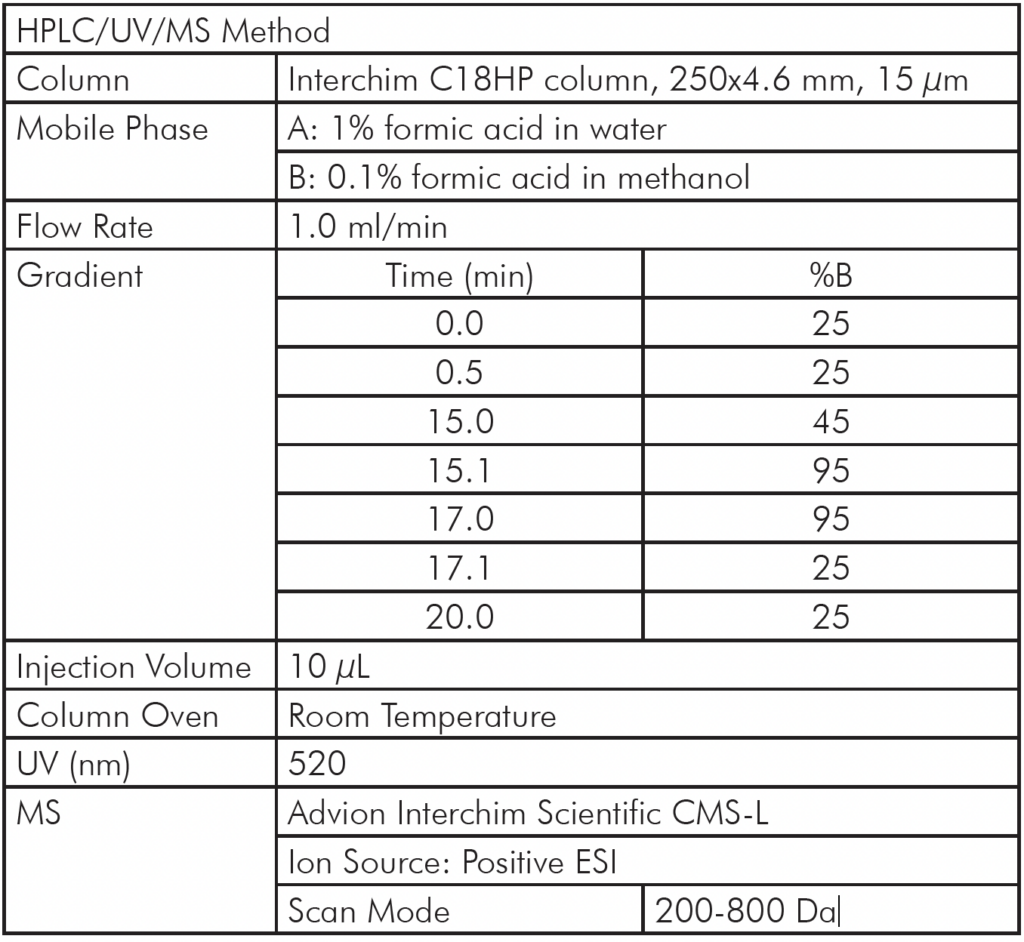
Analytical HPLC/MS Analysis of Black Rice Extract
The concentrated extract of black rice was diluted 10x with distilled water for HPLC/CMS analysis.
With mass range from 200 to 800 Da, HPLC/MS chromatogram is shown in Figure 1a. The average MS spectrum from the peak at 12.10 min is shown in Figure 1b with a single ion at m/z 449.2 detected in the positive ESI mode. The MS spectrum with in-source CID is shown in Figure 1c showing a confirmative fragment ion at m/z 287.0
Figure 1: A). The HPLC/MS Chromatogram of black rice extract, B). The average mass spectra of peak at 12.10 min, C). The average mass spectra of peak at 12.10 min with in-source CID at 30V.
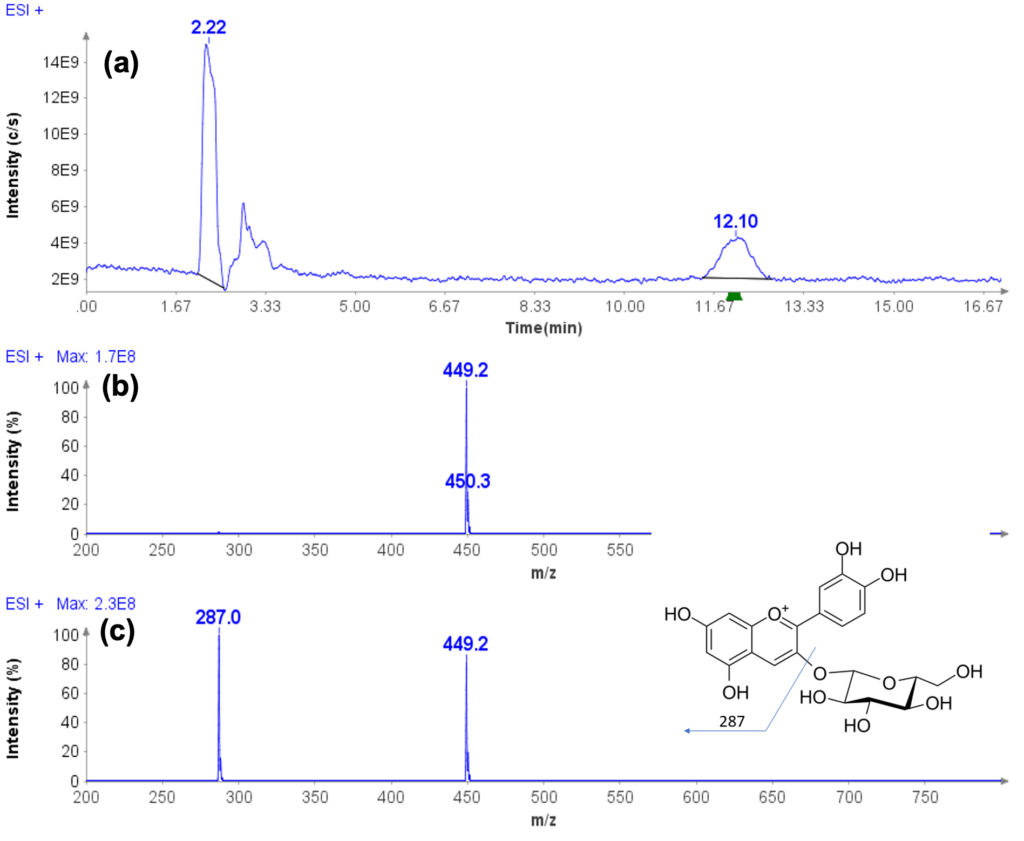
MS Spectra Database Search
Through the MS spectra database search in Advion Data Express, the compound eluted at 12.1 min is confirmed as Cyanidin-3-glucoside (Cyn-3-Glu).
Figure 2: Library search result of the average MS spectra in Figure 1c extract.

Peak Express Software Helps to Detect other Anthocyanin
The Peak Express™ software implemented in Data Express can dynamically determine the rate of change of intensity and standard deviation of all ions being detected and only display the ions that exceed a preset threshold setting.
Peak Express™ helps to detect another peak at 14.41 min in the ΔIC chromatogram (Figure 3b) that is barely indicated in its TIC chromatogram (Figure 3a). ΔS Delta Spectrum with the in-source CID shows two ions detected at m/z 463.3 and 301.1.
MS spectrum database search determines that it is Peonidin-3-O-glucoside (Search result is shown in Figure 4).
Figure 3: A). The HPLC/MS chromatogram of black rice extract, B). The ΔIC chromatogram of black rice extract C). The ΔS Delta Spectrum of peak at 14.41 min with in-source CID at 30V
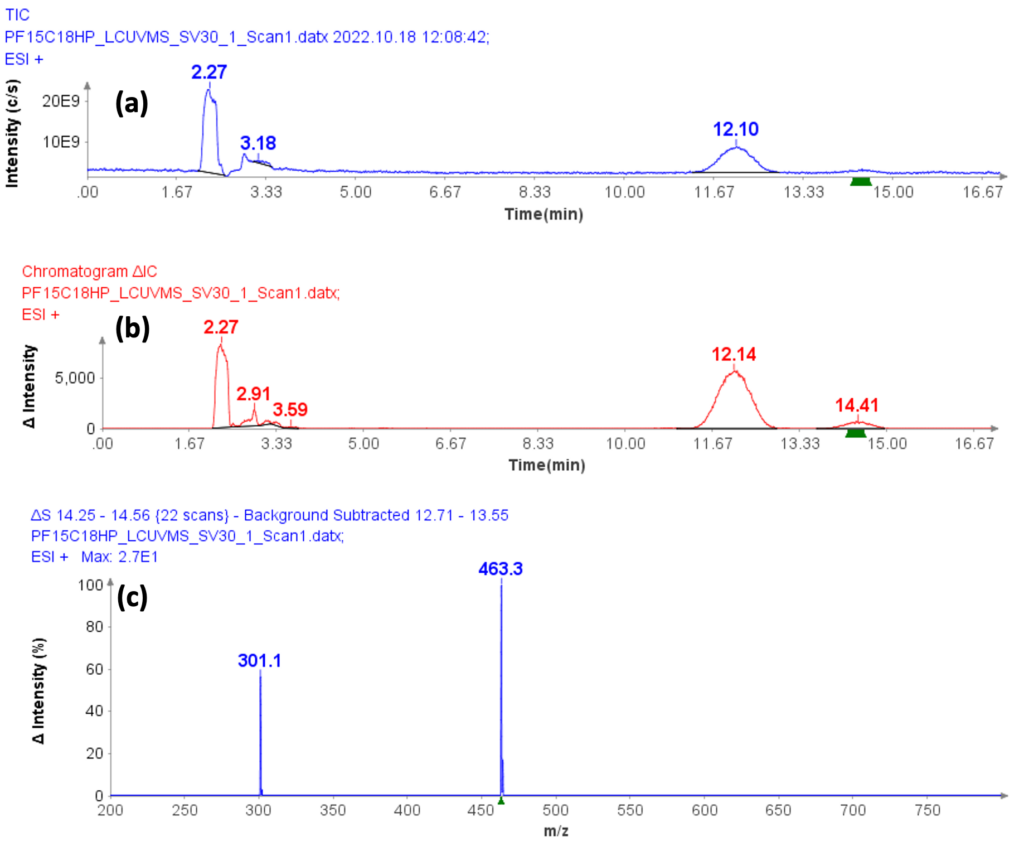
Figure 4: The library search result of the ΔS Delta Spectrum in Figure 3c
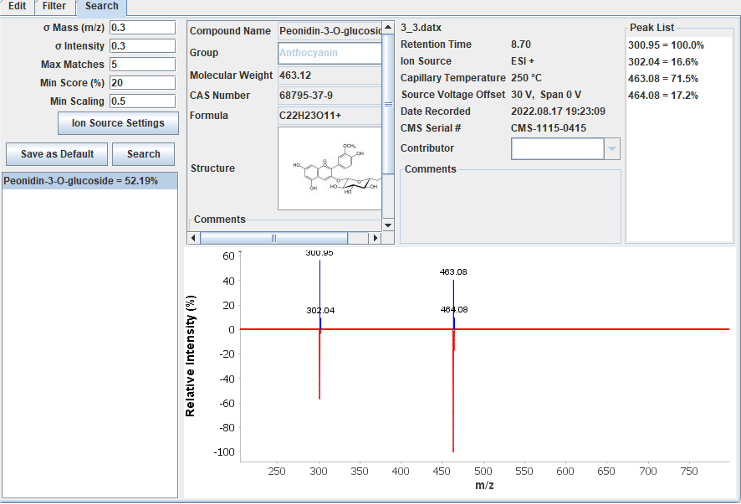
HPLC/UV Analysis of Black Rice Extract
The black rice extract was also analyzed by HPLC/UV. Two characteristic UV absorption peaks of Cyn-3-Glu at 12.01 min are found at 278 nm and 518 nm (Figure 5b).
520 nm is used to trigger the fraction collection in the purification with a PrepLC/Flash system.
Figure 5: A). The HPLC/UV chromatogram of black rice extract, B). The UV absorbance profile from peak at 12.07 min
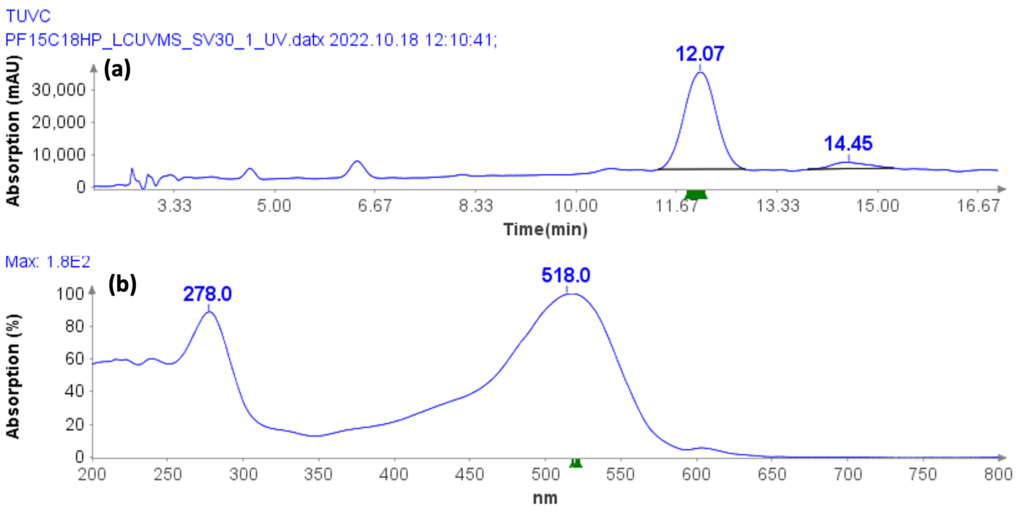
PrepLC Method for cyn-3-glu Purification
Table 2: PrepLC method for Cyn-3-Glu purification
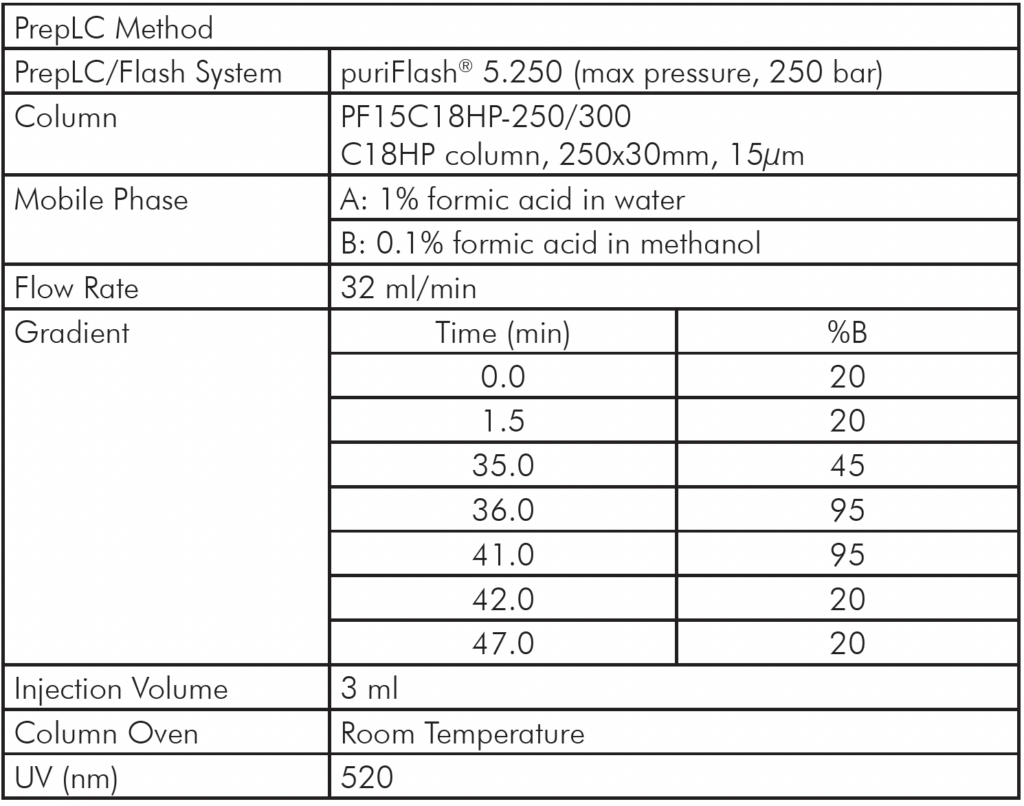
Purification
Black rice extract purifications are performed on an Advion Interchim Scientific puriFlash® 5.250 PrepLC/Flash system.
The detail information of solvents and separation method is listed in the method table. Typical PrepLC/UV chromatogram of the black rice extract (3 ml sample) is shown in Figure 6.
Each fraction collected is additionally analyzed by HPLC-UV/MS to confirm identification and provide additional purity analysis.
Figure 6: The prepLC chromatogram (520 nm) of black rice extract on puriFlash® 5.250 PrepLC/Flash system
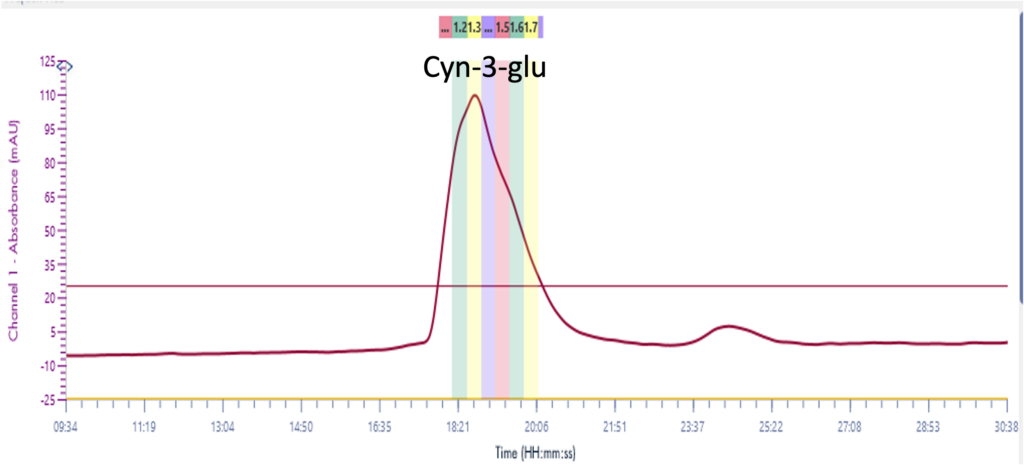
HPLC/UV Analysis of Fraction 2, 5 and 8
All fractions are analyzed by HPLC/UV/MS. HPLC/MS analysis of fraction 1 shows an impurity with the m/z 611, and low UV response of Cyn-3-Glu. And fractions 2-8 have a purity of more than 97.6 %. The HPLC/UV chromatograms of fraction 2, 5 and 8 are used as examples shown in Figure 7 with purities of 97.6% for 2, 100% for fraction 5 and 8.
Except for the first fraction, all fractions were combined for dryness. The drying of fractions was performed on an Advion Interchim Scientific puriFlash® XS-Vap system at room temperature. The weight of Cyn-3-Glu purified from 30g black rice is 25.8 mg.
Figure 7: The HPLC/UV chromatogram of fractions a) Fraction 2, b) Fraction 5, c) Fraction 8.
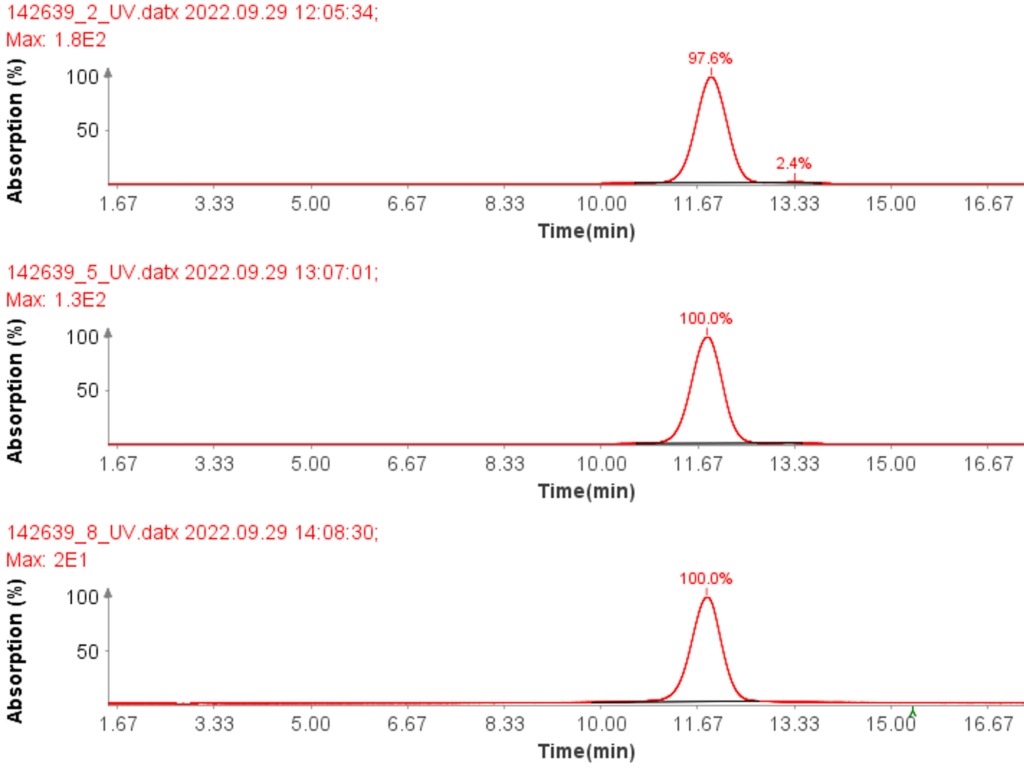
Quantitation of C3G by HPLC/UV
To confirm the final purity of the dried sample, a certified reference standard of Cyn-3-Glu was used for the quantitative analysis of dry Cyn-3-Glu to check its purity. HPLC calibration curve of Cyn-3-Glu reference is shown in Figure 8.
The measured amount of Cyn-3-Glu is 25.5 mg with a purity of 99.0%.
Figure 8: HPLC/UV calibration curve of Cyn-3-Glu reference standard

Conclusion
With the developed HPLC/UV/MS and PrepLC methods, Cyn-3-Glu in black rice extract can be separated, purified, and quantified.
25.5 mg of Cyn-3-Glu was purified from 30g black rice with a purity of 99.0%.
Combination of Interchim PrepLC/Flash and Advion HPLC-UV/CMS is a simple and cost-effective solution for extracting and purifying Cyn-3-Glu from rice sample or samples containing Cyn-3-Glu.
Following this general workflow:

HPLC/CMS provides a simple way for the identification and purity analysis of target compounds in natural product purification.
